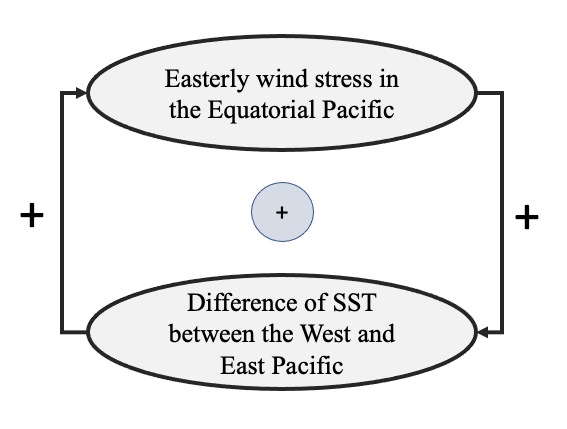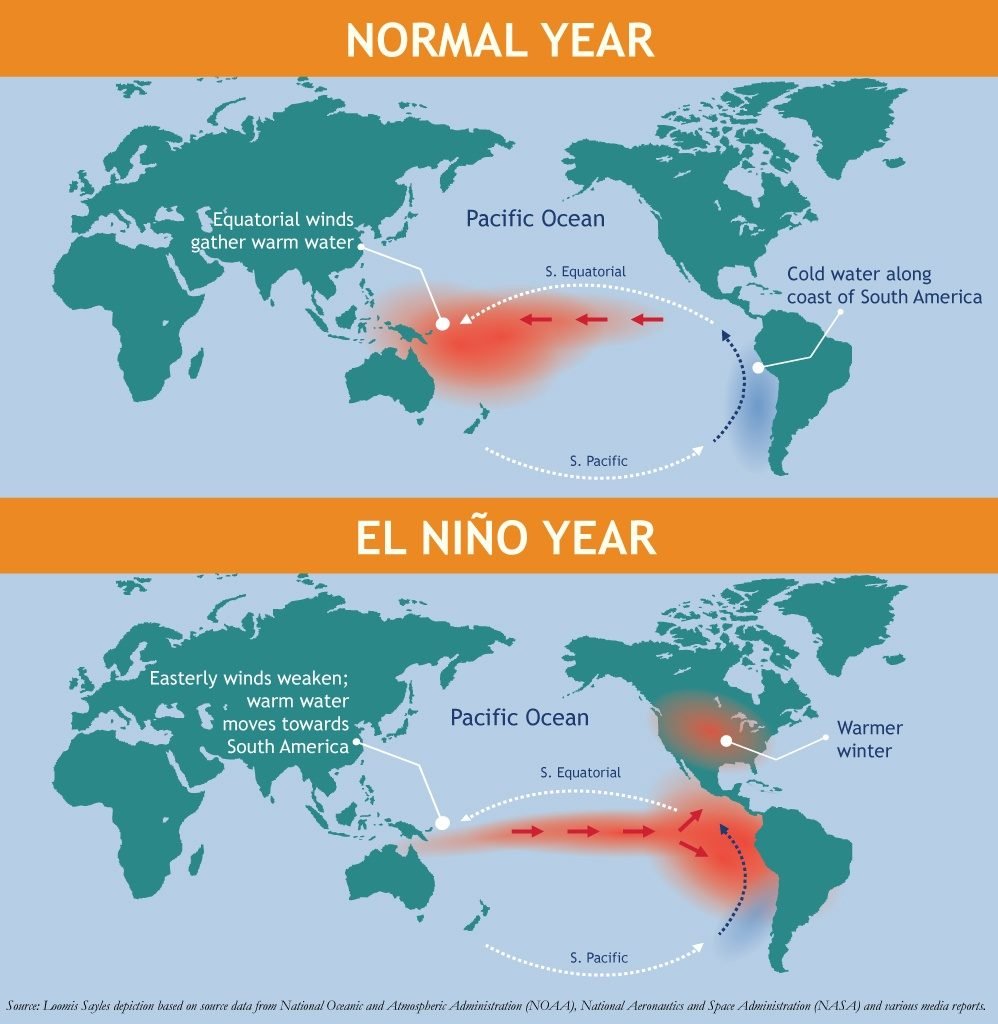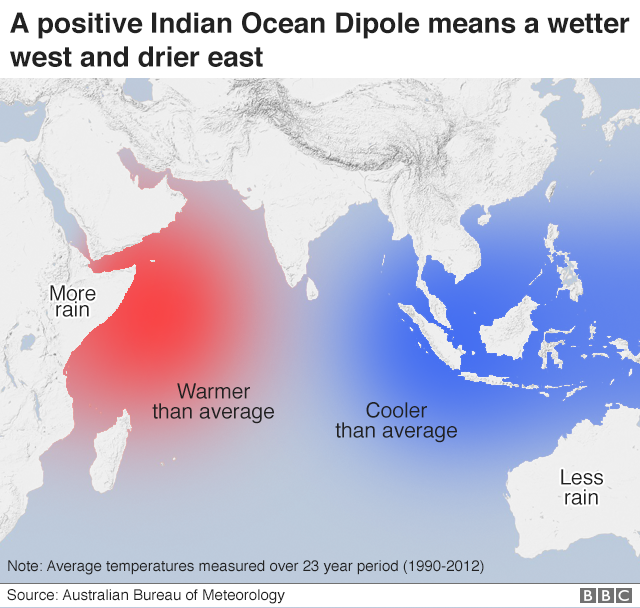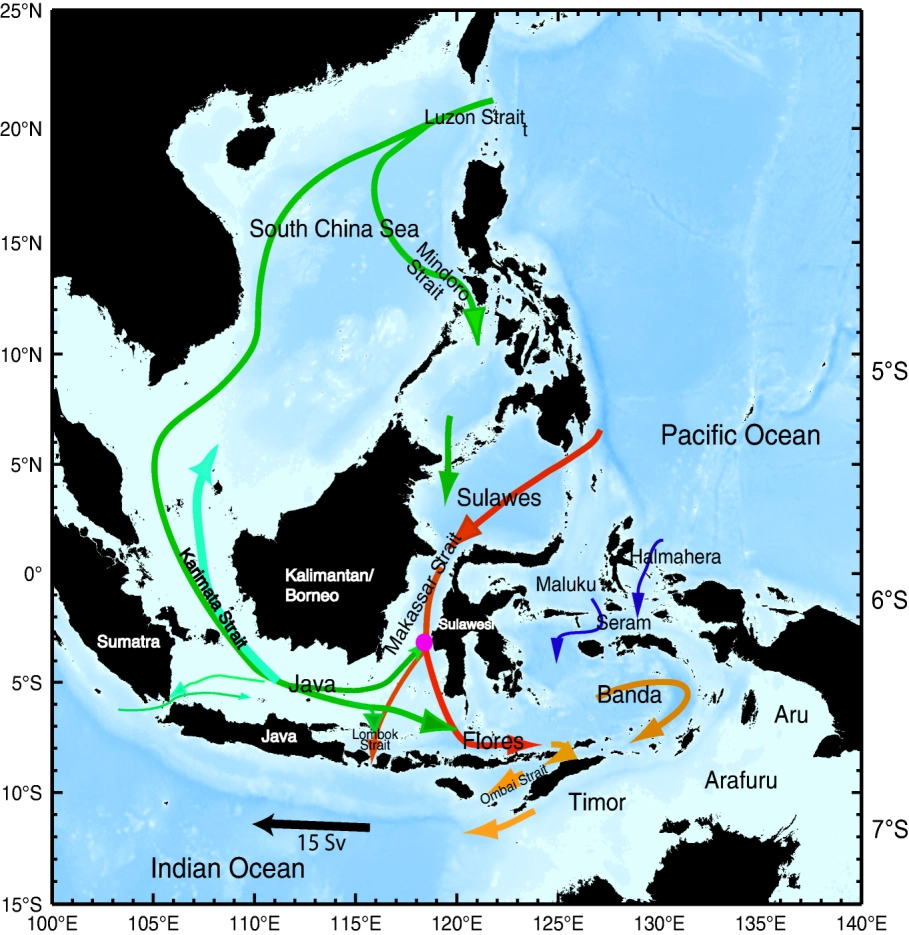Life on Earth is marked by various cyclical variations, including day and night, changing seasons, and tidal patterns. While some of these cycles occur over short periods and can be precisely predicted, others operate on longer timescales and are more challenging to forecast. Among these, one climate cycle with widespread and significant effects is El Niño. Originating in the Pacific Ocean, El Niño has global consequences that have grown increasingly impactful in recent decades. These include devastating flooding, droughts, famines, and mass die-offs of marine life. For example, a severe El Niño in 1998 caused the death of approximately 16% of the world’s coral reefs, triggering a mass-bleaching event with long-lasting effects.
Though there is no universal definition of El Niño, it has been recognized in various ways over time. Fishermen in the 17th century observed periods of warmer waters and poor fishing that peaked around Christmas, naming it “El Niño de la Navidad,” or “The Christmas Child.” From an oceanographic perspective, it is defined by unusually warm sea surface temperatures, stronger southward coastal currents, increased precipitation, and flooding along the coasts of Ecuador and northern Peru. By the late 19th and early 20th centuries, scientists connected seemingly unrelated regional events and identified them as phases of the larger El Niño-Southern Oscillation (ENSO) phenomenon.
The ENSO cycle fluctuates with an average interval of about five years, though it can range between two and eight years. These fluctuations result in warmer-than-average ocean temperatures, which have a significant impact on global weather patterns, causing droughts in some regions and flooding in others. Unlike regular oscillations like tides, ENSO is a “broad-banded” signal, displaying a broad spectral peak over various frequencies rather than a pure sine wave. During El Niño events, weakened trade winds disrupt the upwelling of cold water, leading to reduced fish populations and altered ocean currents. These changes are particularly crucial for the Indian Ocean, where fisheries play a vital role in the regional economy.
The intensity of El Niño events can vary significantly, with some being far more severe than others. Continuous monitoring and research are essential for better understanding its impacts and improving predictive models for future occurrences. To explore the complexities of ENSO in the Indian Ocean, this section is divided into subsections addressing specific aspects such as the Bjerknes Feedback, the Indian Ocean Dipole, and the Indonesian Through-flow. These discussions aim to elucidate the underlying physical processes and the diverse local and global effects of ENSO, with particular emphasis on its implications for the Indian Ocean region.
Process
Bjerknes feedback
The Bjerknes feedback, named after meteorologist Vilhelm Bjerknes, describes a positive feedback loop that amplifies temperature changes in the tropical Pacific. This cycle begins with the initial warming of the ocean surface, which increases water vapor evaporation into the atmosphere. The trapped heat from this vapor further warms the atmosphere, triggering additional evaporation and intensifying the warming. During El Niño events, this mechanism influences the thermocline—a layer in the ocean where temperature changes sharply with depth. A weakened thermocline leads to reduced upwelling of cold, nutrient-rich water, further warming the surface and altering atmospheric and oceanic conditions.

What causes ENSO?
The weakening of trade winds during ENSO redistributes heat in the upper ocean, causing abnormally warm surface waters in the central and eastern tropical Pacific. Trade winds usually promote upwelling, bringing nutrient-rich cold water to the surface, which supports fisheries and enhances productivity. However, when these winds weaken, warm water moves eastward, disrupting typical ocean-atmosphere interactions. This process results in low pressure and heavy rainfall in the western Pacific and drier conditions in the east. Early signs of El Niño include weakening trade winds and a shift in pressure patterns, with warm water accumulating in the eastern Pacific and a shallower thermocline.

The physics behind it
El Niño is a coupled ocean-atmosphere phenomenon characterized by irregular warm episodes lasting one to two years. Its impacts include above-normal sea-level pressure in the Australia-Indonesia region, weakening easterly winds, increased precipitation east of 160ºE, enhanced Pacific Hadley circulation, and teleconnections to higher latitudes. These teleconnections include changes such as a deepening and southward shift of the Aleutian low during Northern Hemisphere winters, demonstrating the far-reaching effects of this complex climate phenomenon.
The Indian Ocean Dipole (IOD) is a significant climate phenomenon that influences sea surface temperatures (SST) in the tropical Indian Ocean, oscillating between its positive (IOD+) and negative (IOD-) phases. During a positive IOD, cooler SSTs develop near Sumatra in the eastern Indian Ocean, while warmer SSTs dominate the western Indian Ocean. This phase often brings heavy rainfall to eastern Africa and droughts to Indonesia. Conversely, a negative IOD sees reversed conditions, with wetter conditions over Indonesia and drier periods in eastern Africa. The IOD significantly impacts regional monsoons and global atmospheric circulation patterns. Importantly, it also interacts with El Niño, with positive IOD events often occurring after El Niño or preceding warm temperature anomalies in the western Pacific that can trigger El Niño events.

The Indonesian Through-flow (ITF) is another critical system connecting the Pacific and Indian Oceans via the Indonesian archipelago. The ITF transports warm, freshwater from the Pacific to the Indian Ocean, playing a key role in regulating the Indo-Pacific and global thermohaline circulation. This flow affects regional heat distribution, cooling the Pacific while warming the Indian Ocean. The ITF’s response to El Niño includes reduced trade winds, which lower water transport volumes and heat flow to the Indian Ocean. This decrease impacts regional and global ocean currents, as well as atmospheric circulation.
The atmospheric bridge
The air-sea interactions driving El Niño and the Southern Oscillation predominantly occur in the equatorial Pacific Ocean. However, ENSO’s impacts extend globally through atmospheric teleconnections, altering humidity, air temperature, cloud distribution, and wind patterns far beyond the Pacific. These changes influence SST, mixed layer depth, salinity, and ocean currents in interconnected basins, including the Indian Ocean, North and South Pacific, and the Atlantic. This interconnectedness highlights the complex feedback mechanisms ENSO triggers, demonstrating its far-reaching influence on the global climate system.

